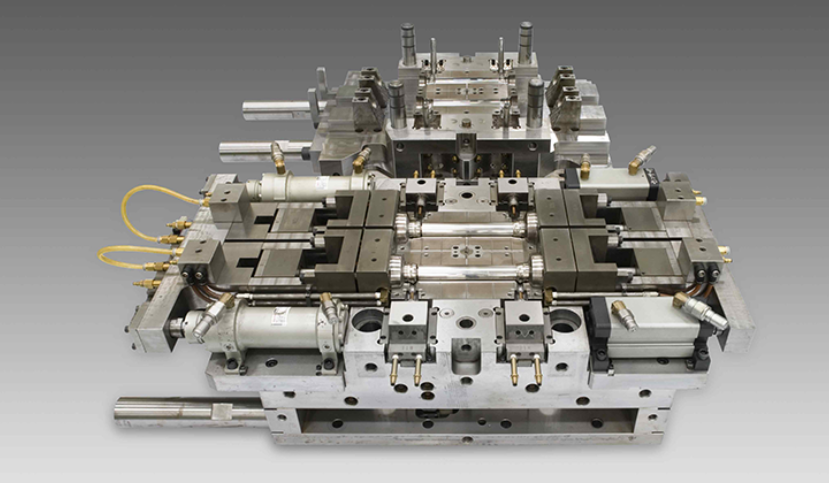Understanding the Factors that Impact Injection Mold Costs
Injection molding is a popular manufacturing process used to produce a wide range of plastic products. It involves injecting molten plastic material into a mold cavity, which is then cooled and solidified to form the desired shape. The cost of injection molding is an important consideration for manufacturers, as it affects the overall profitability and competitiveness of their products. In this article, we will explore the various factors that impact injection mold costs.
1. Design complexity:
The complexity of the part design is one of the primary factors influencing mold costs. Intricate designs with complex shapes, undercuts, or thin walls require more detailed and precise molds, which can be more expensive to manufacture. Simple designs with straightforward shapes and fewer features, on the other hand, tend to have lower mold costs.
2. Material selection:
The type of plastic material used for injection molding also affects mold costs. Different plastics have varying properties and characteristics, and some materials may require specific mold designs or additional processing steps. Specialty materials, such as reinforced plastics or high-performance polymers, generally result in higher mold costs compared to standard plastics.
3. Mold size and complexity:
The size and complexity of the mold itself have a significant impact on costs. Larger molds require more material and longer machining times, leading to higher manufacturing costs. Similarly, molds with intricate details, multiple cavities, or complex parting lines require more precise machining and intricate tooling, increasing the overall mold cost.
4. Tooling materials:
The choice of tooling materials also plays a role in mold costs. Injection molds are typically made from steel or aluminum, with each material having its advantages and drawbacks. Steel molds offer better durability and longer lifespan but are more expensive to manufacture. Aluminum molds, on the other hand, are cheaper and quicker to produce but have a shorter lifespan.
5. Production volume:
The expected production volume of the molded parts can impact mold costs. Injection molds for high-volume production typically require higher upfront costs but result in reduced per-unit costs. Conversely, molds for low-volume production may have lower initial costs but higher per-unit costs due to factors like reduced economies of scale and higher setup expenses.
6. Surface finish requirements:
The desired surface finish of the molded parts can also influence mold costs. Smooth and glossy finishes often require additional machining or polishing processes, which can increase the overall mold cost. On the other hand, parts with textured or matte finishes may require specialized mold designs or additional texturing processes, leading to higher mold costs.

7. Part tolerances and quality requirements:
The required part tolerances and quality standards can impact mold costs. Parts with tight tolerances or complex geometries may require more precise tooling and additional machining steps to achieve the desired accuracy, resulting in higher mold costs. Similarly, parts that require specific quality certifications or additional testing may have higher mold costs due to additional time and resources required.
In conclusion, several factors impact the cost of ແມ່ພິມສີດ. Design complexity, material selection, mold size and complexity, tooling materials, production volume, surface finish requirements, and part tolerances and quality requirements all play significant roles. Manufacturers must carefully consider these factors to ensure cost-effective production while maintaining the desired quality and functionality of the molded parts.
ທີ່ຜ່ານມາ:Crate Mould manufacture: Crafting the Perfect Solution for Efficient Packaging
ຕໍ່ໄປ: Designing the Perfect Plastic Modern Chair Mold: A Step-by-Step Guide
-
Injection Molding Chair Mold for Sale
2023-6-19
Injection molding is a popular manufacturing process used to create a wide range of products, including chairs. The proc...
ເບິ່ງລາຍລະອຽດ -
Precision Mold Design: Innovative Technology Leads to Efficient Production
2024-6-28
In today's highly competitive manufacturing environment, the importance of precision mold design is becoming increasingl...
ເບິ່ງລາຍລະອຽດ -
Large Plastic Molds: Crafting Precision and Efficiency
2023-5-4
Large plastic molds are essential in the manufacturing industry as they enable the production of intricate plastic parts...
ເບິ່ງລາຍລະອຽດ -
Creating an English Title for Plastic Injection Crate Mold
2023-11-30
Plastic injection molding technology has revolutionized the production of various plastic products, including crates use...
ເບິ່ງລາຍລະອຽດ -
Plastic Molds: Essential Tools in Industrial Manufacturing
2024-10-19
Plastic molds play an important role as key equipment in the production of plastic products. The following is a detailed...
ເບິ່ງລາຍລະອຽດ -
ແມ່ພິມລົດຍົນ: ເປັນອົງປະກອບຫຼັກໃນການຜະລິດຍານພາຫະນະ
2023-4-16
ແມ່ພິມລົດຍົນແມ່ນສ່ວນປະກອບທີ່ສຳຄັນໃນການຜະລິດລົດຍົນ, ແມ່ນໃຊ້ໃນການສ້າງສ່ວນຕ່າງໆຂອງລົດຍົນ, ເຄື່ອງຈັກ...
ເບິ່ງລາຍລະອຽດ







